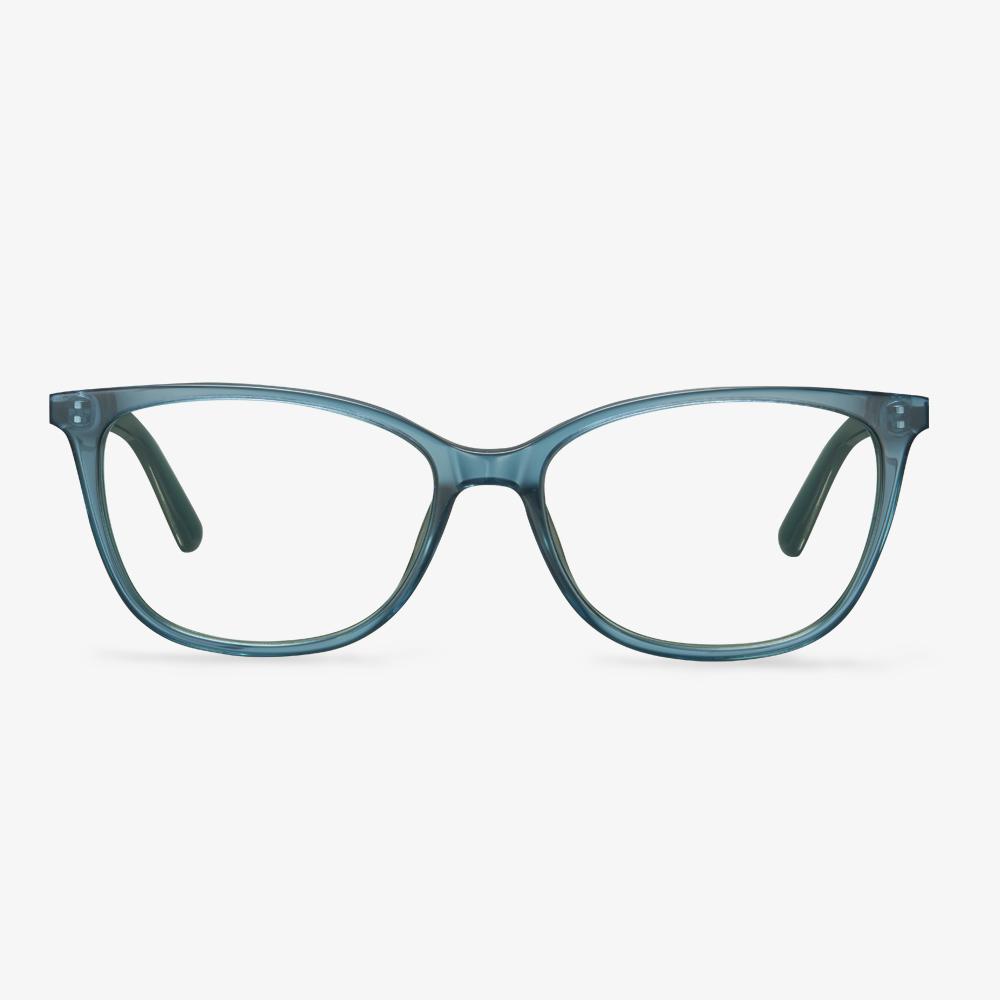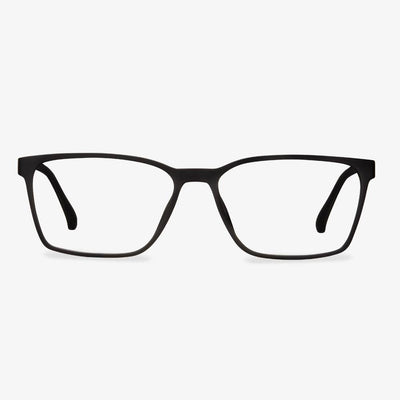The frame of prescription glasses
At present, the more common materials for frames are non-metal and metal. Non-metals mainly include TR90, sheet material, etc., and metals include alloys, titanium, and so on. TR90 and sheet material are actually plastics, but they are firm and are not easy be deformed at room temperature. Also, they have good formability so that they can be made in many fashionable styles. The general alloy material has good firmness and flexibility, but the disadvantage is that it is easy to fade. The pure titanium frame is corrosion-resistant and very strong. It is about 40% lighter than the general alloy frame. It must be welded and electroplated in an oxygen-free state, which requires high equipment and technology. Relatively speaking, the price of TR90 and alloys will be lower, and pure titanium will be more expensive. You can choose according to your budget.
Why should children be more vigilant about harmful blue lights?
The amount of light transmitted to the retina through media such as the cornea, lens, and vitreous is age-related. Blue light poses the greatest risk and damage to the eyes during adolescence. As our eyes' refractive media naturally yellows, more blue light is absorbed, preventing it from reaching the retina. The lens transmittance of children under the age of 10 is more than six times higher than that of adults. It is important to prevent the damage of blue light to children's visual health.
How to adapt to progressive lenses?
People who are prone to motion sickness or have inner ear diseases may suffer dizziness, nausea, vomiting, and other symptoms due to their inability to tolerate the slight deformation of the visual objects, so they need to pay more attention when wearing them. For people who have not worn reading glasses before, it is not recommended to wear graded multi-focus glasses directly because their eyes will not be able to adapt quickly.
How do bifocal reading glasses work?
Bifocal reading glasses have two different lenses on the same lens. The top of the lens is your normal distance prescription, while the bottom is for close-up viewings, like reading. The two lenses allow you to alternate between them by moving your eyes up and down as needed. A bifocal lens is a type of lens that has two different areas of vision: one for close range and one for long-range. Typically, the upper section covers remote vision and the lower section covers reading. With a traditional bifocal lens, you can see the difference between the two lenses because the lower curve is a little different.
HINDAR blue light blocking glasses
With advanced equipment, system production, and strict management, they adopt German technology and PARUPU lens geometric structure owned by HINDAR OPTICE LAB, which can effectively block various kinds of blue light, ultraviolet light, and other different wavelengths, to protect the health of eyes. Since its inception, Hindar has enjoyed a lot of popularity, and while it has achieved some good results, it has not slowed down and is still striving to become the top brand in the industry.
John Lennon Imagine
The circular wire-rimmed glasses like these were made popular by the Beatles' idols in the 1960s and immediately became a favorite of hippies and music lovers around the world. This modern version has an ultra-light frame made of stainless steel that resists rust and corrosion. Flexible spring hinges and coated temples are very comfortable. For fans of retro-inspired accessories, the glasses are a favorite.
What Are Varifocal Glasses?
Varifocal glasses, also known as varifocals, varifocal lenses, PALs, or progressive lenses, have a gradual change in strength from the top of the lens to the bottom with multiple focal points in between. This allows you to see all distances and focus points through just one lens. Varifocal lenses are typically used when you have two prescriptions, one for distance and one for reading.
There are three regions of a varifocal lens which are distant zone, intermediate zone and, near/reading zone. Usually, the upper portion of the varifocal lens is the distant zone and the bottom portion of the varifocal lens is the near or reading zone.
One of the benefits of varifocal glasses is that you do not need to prepare 2 separate pairs of glasses or need to switch between frames for different vision needs.











































